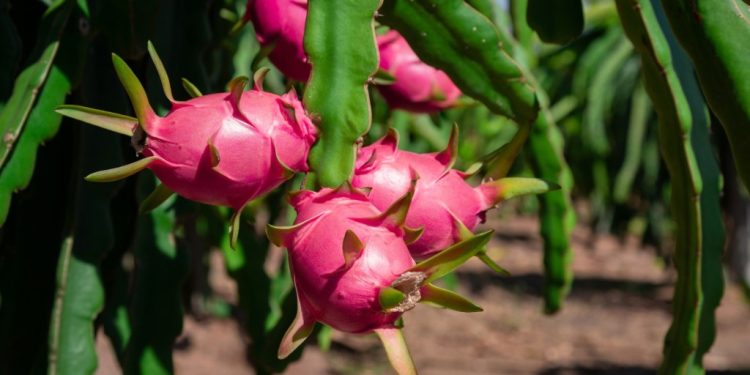Five things to do in the garden this week:
Fruit. It’s time that you plan to grow dragon fruit, also known as Pitaya. Although Dragon Fruit comes from the tropics of Central America and South America, I saw it grow in the valleys of San Fernando and San Gabriel, and I can say without hesitation that it would grow anywhere in the south of Los Angeles, too. The fruits of the dragon are divided into species of Hylocereus and Selicruus. The former have shutters that overlap with smooth skin that is red, pink, magenta or white and pulp that can occur in one of these colors, while the latter have yellow and thorny skin and white pulp only. Selenicereus fruits are sweeter and the white flowers that precede them are enormous and fragrant. To increase the softness of Hylocereus types, refrigerate them before consumption. Dragon fruits grow on a vigorous cacti in whole in the partial sun. Plants are available in Papaya Treeeryery (Papayatreneursery.com) in Granada Hills and through many online sellers.
Vegetables. Mizuna is a leafy green in the mustard family with a sharp and tangy flavor. You can grow it throughout the year, but it is likely to bolt (go to the seeds) in hot weather. To prevent it from bolling, plant it in the shade while we deepen spring. Mizuna grows quickly, producing edible leaves in 40 days. Harvest whole leaves or, as with leafy green vegetables in general, cut the leaves partially and they will grow a little more. The Japanese pink variety has bases of colorful leaves which give an ornamental touch to this nutritive green. Order Japanese pink seeds from Rareseeds.com. Mizuna is derived from two Japanese words: “Mizu”, which means water and “na”, which means greens, you will have to make sure that the soil of your Mizuna patch remains somewhat humid. Young leaves can be consumed raw or thrown fresh in salads while older leaves have better tasting when it is steamed.
Herbs. I have always thought of cutters (Galium APARINE) as a bad. I did not know its medicinal properties. For years, he made his way through my plantation in Lantana. He is aptly named Clivents because, thanks to tiny and invisible hooks, he closes or sticks to all the plants he touches. It is actually quite attractive with verticles of six to eight lanceolate leaves with an inch that emanate from a single point. Some believe that to treat a burn, you can make a strong tea from its leaves, allow it to cool, then make a compress to apply to your skin. You can find online climate seeds and, when they have planted in rich soil will produce a dense harvest of this sticky grass.
Perennial. The producers of San Marcos (smgrowers.com) led me to discover Fuchsia Begonia (Begonia Foliosa Var. Miniata, which flowers in red without interruption throughout the year. Depriving at a height of three feet, it will be necessary to protect against cold and may not survive a frost. The oval making this perennial an irresistible gem.
Consider installing a pond. Select from the robust and tropical water lys (Nymphaea) and the Lotus plants (Nelumbo) for a colorful but quiet addition to your backyard space. Robust water lilys are the easiest to cultivate and are available in all colors except blue. Tropical water lys are generally blue, but can also be found in pink, while lotus flowers are white creamy and rinsed with pink. Robust water lys are the most tolerant to the cold, although the tropical lotus is also considerably tolerant of the cold. There is also a lotus from North America (Nelumbo Lutea) with yellow flowers which are extremely robust. The tropical water lys gelont where temperatures drop below frost, but in general, wherever oranges will grow, tropical water lys also develop.
Originally published:
California Daily Newspapers


